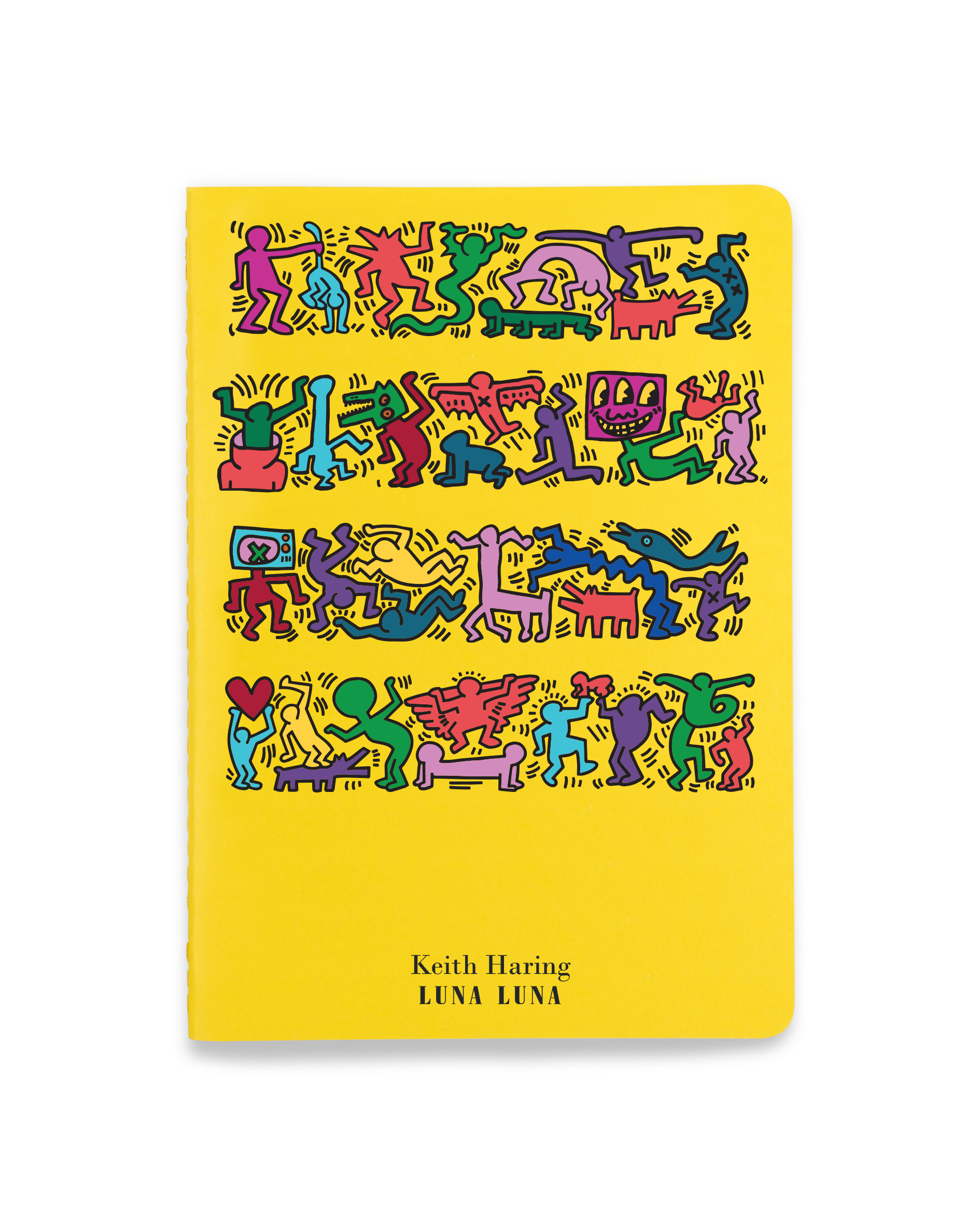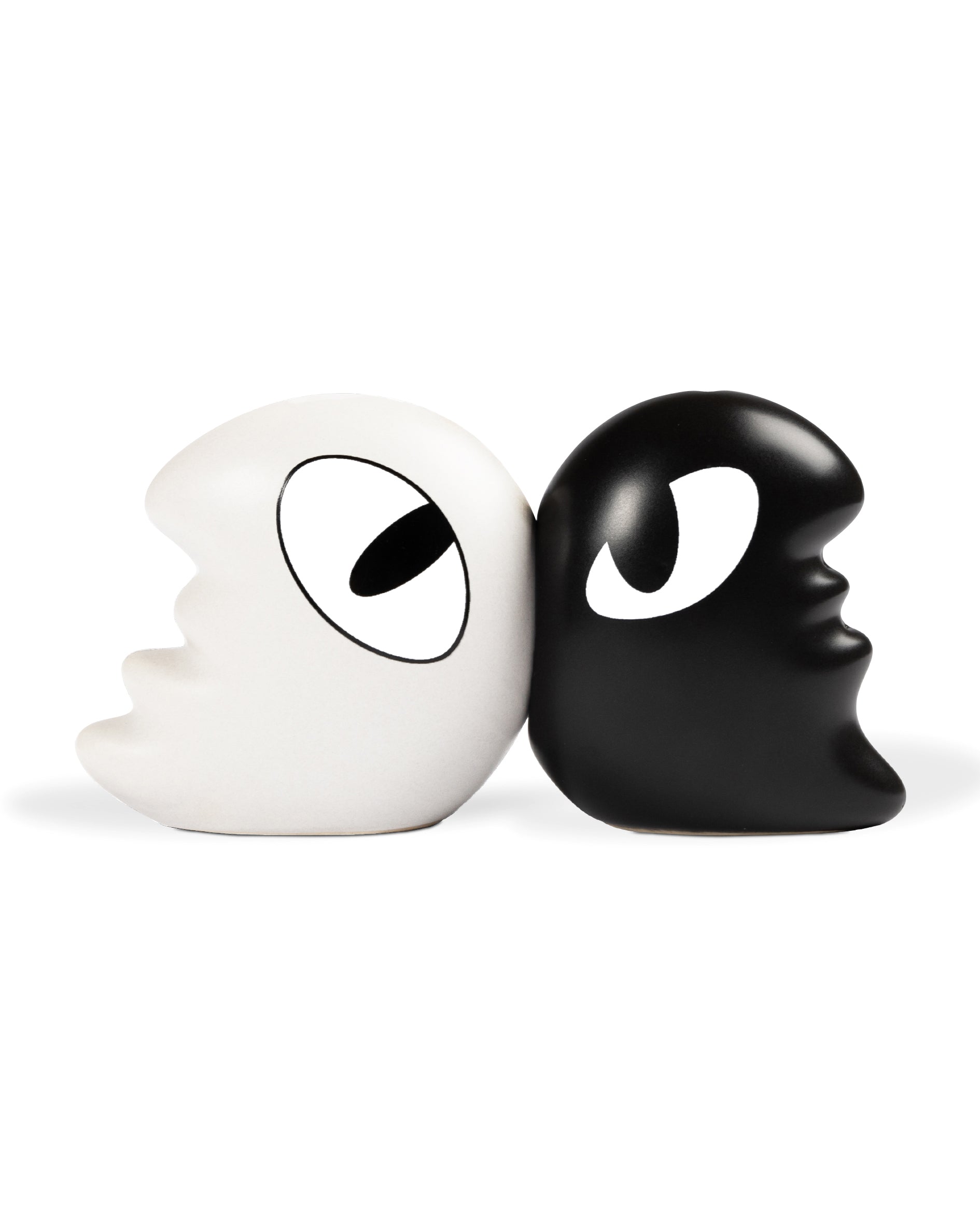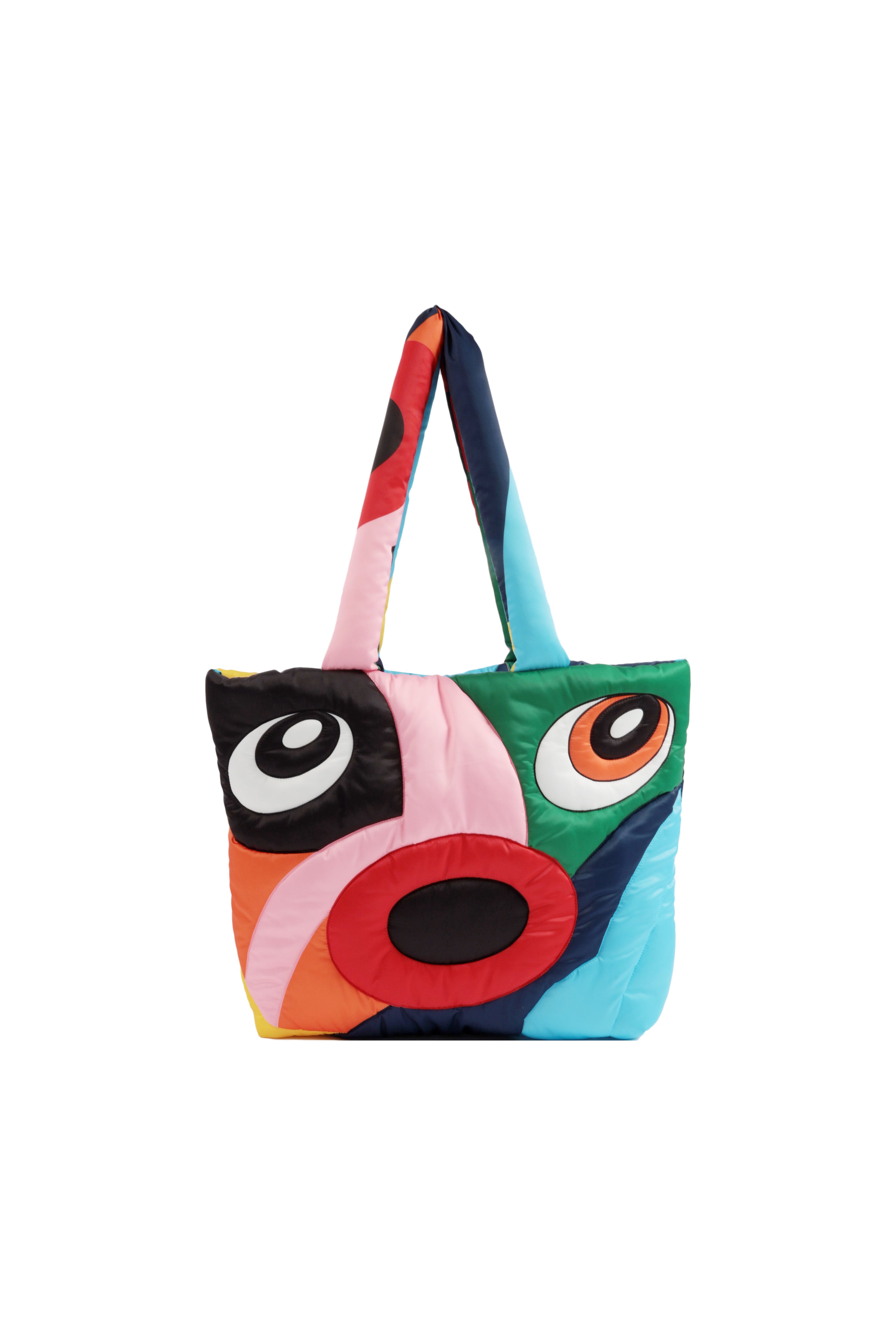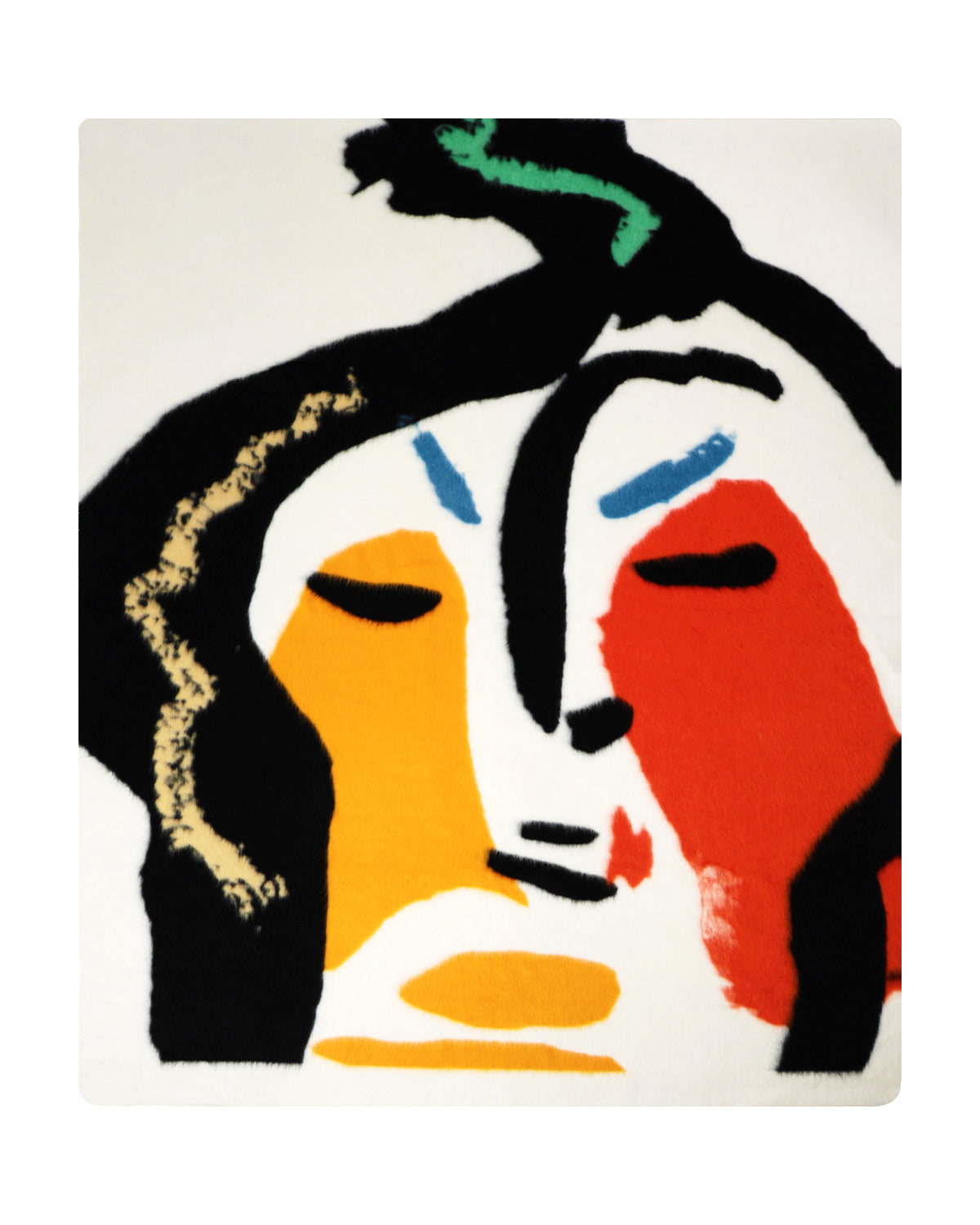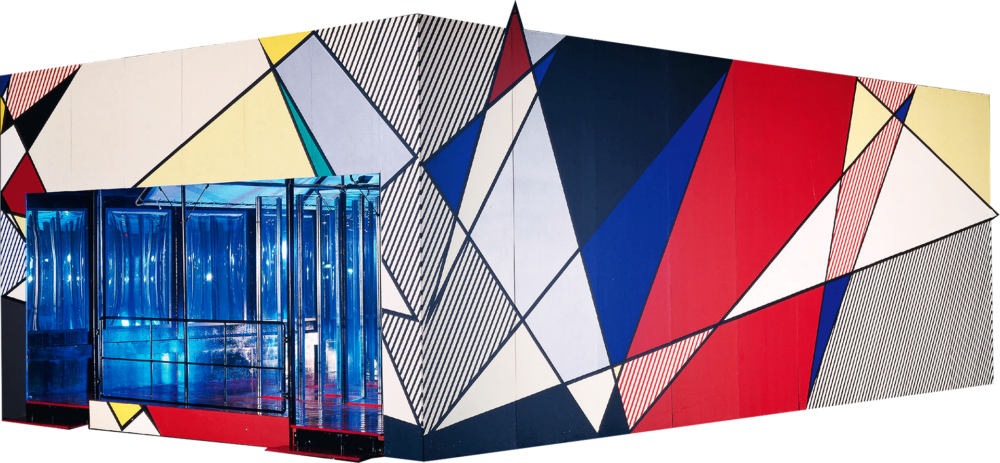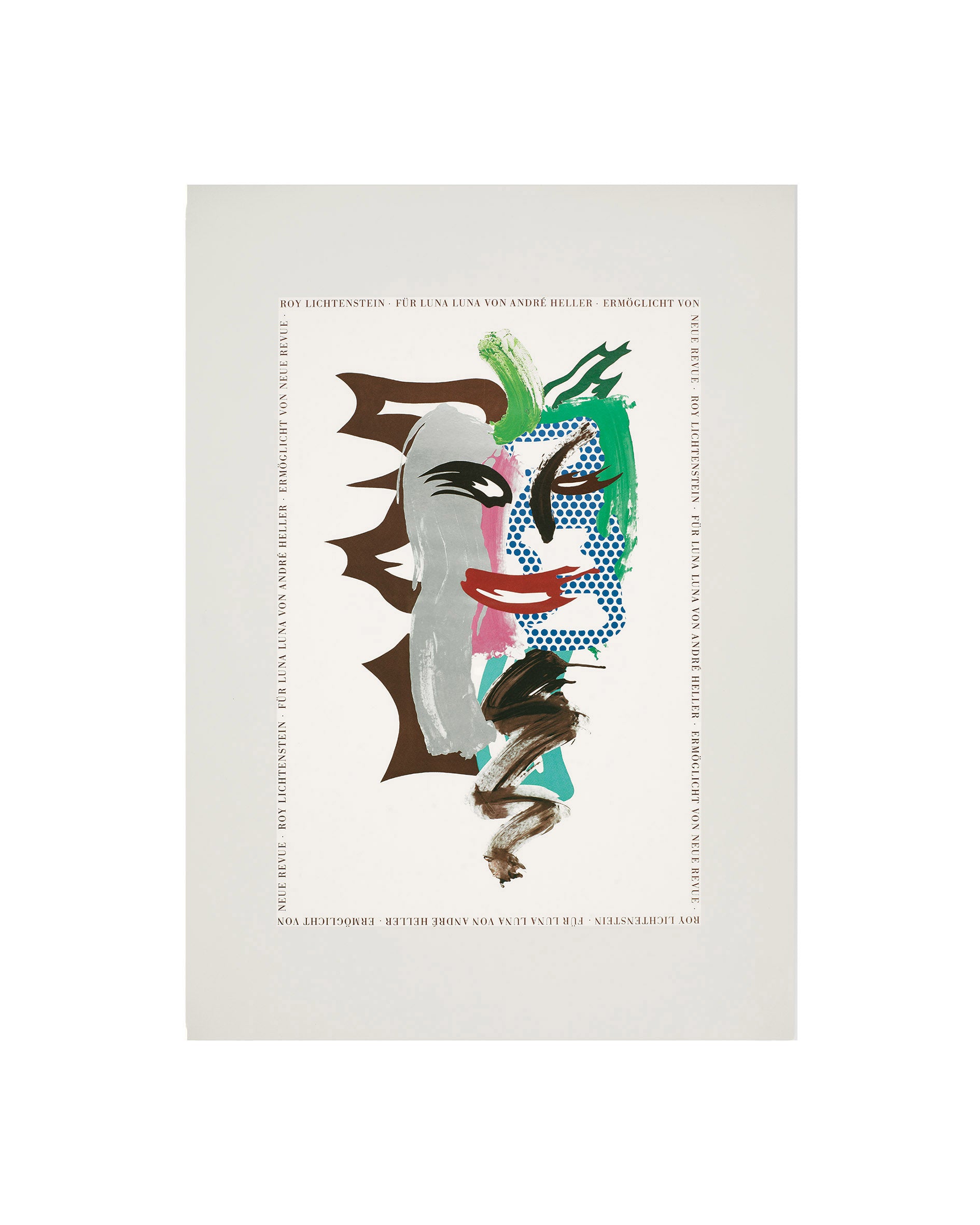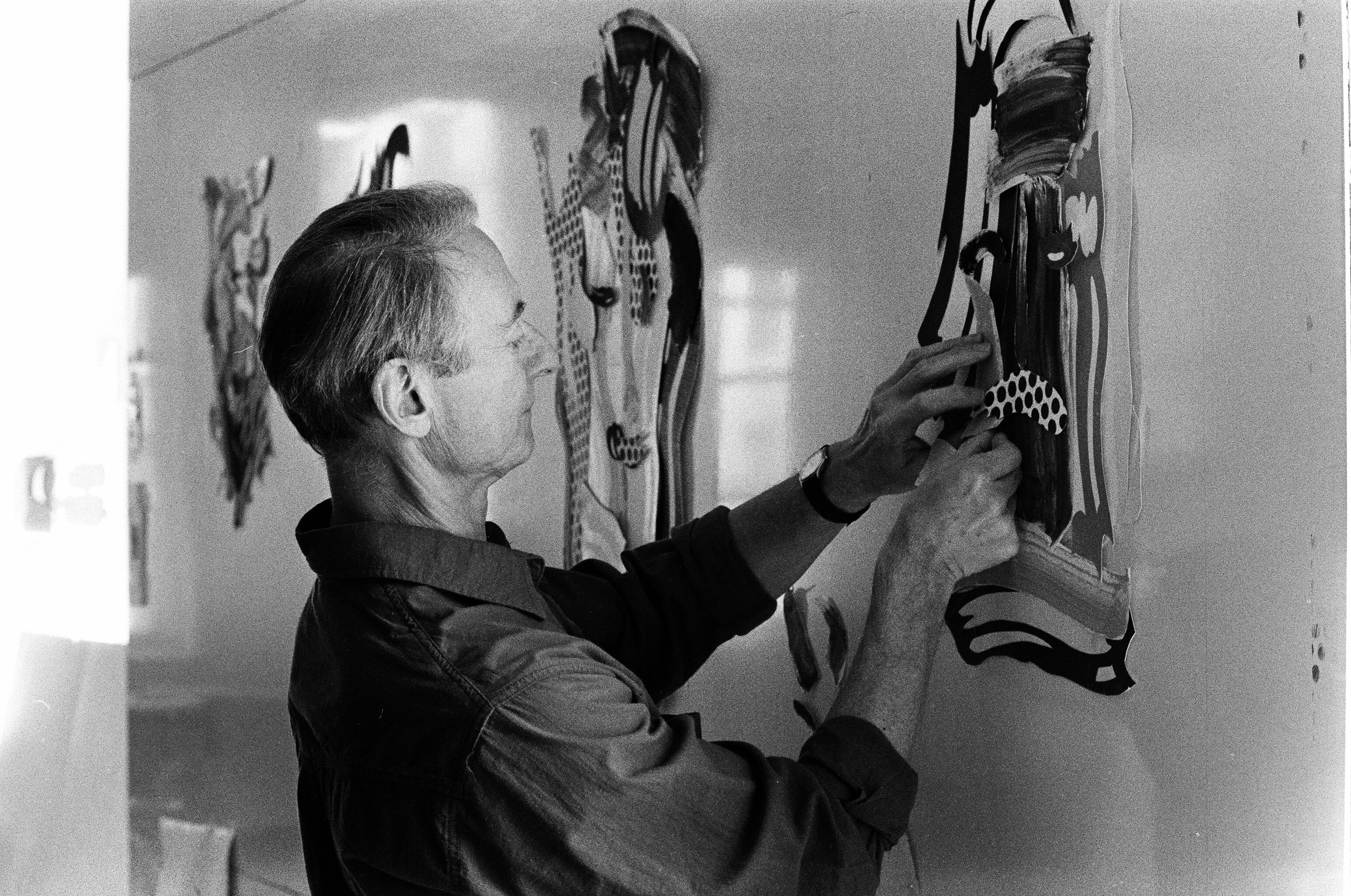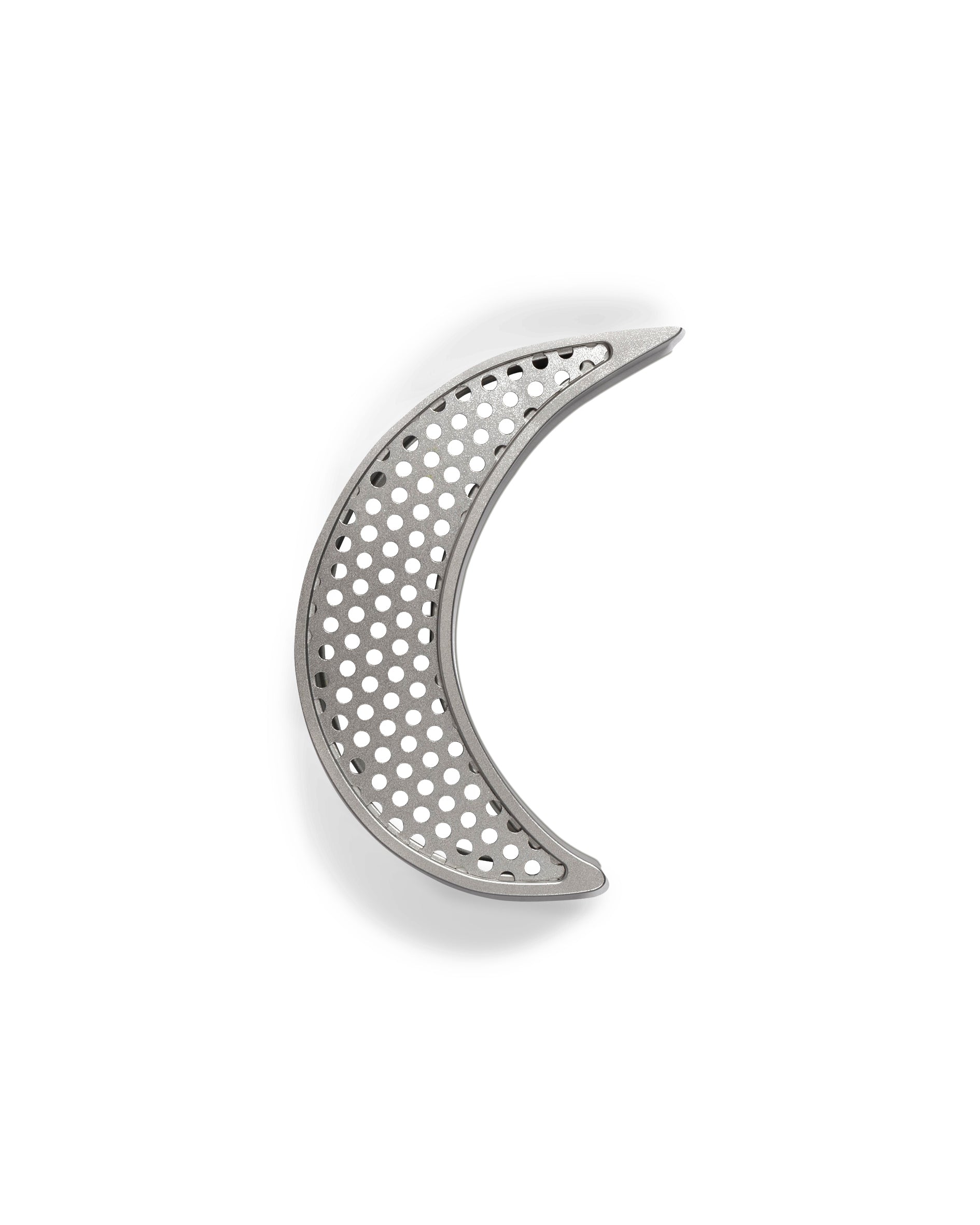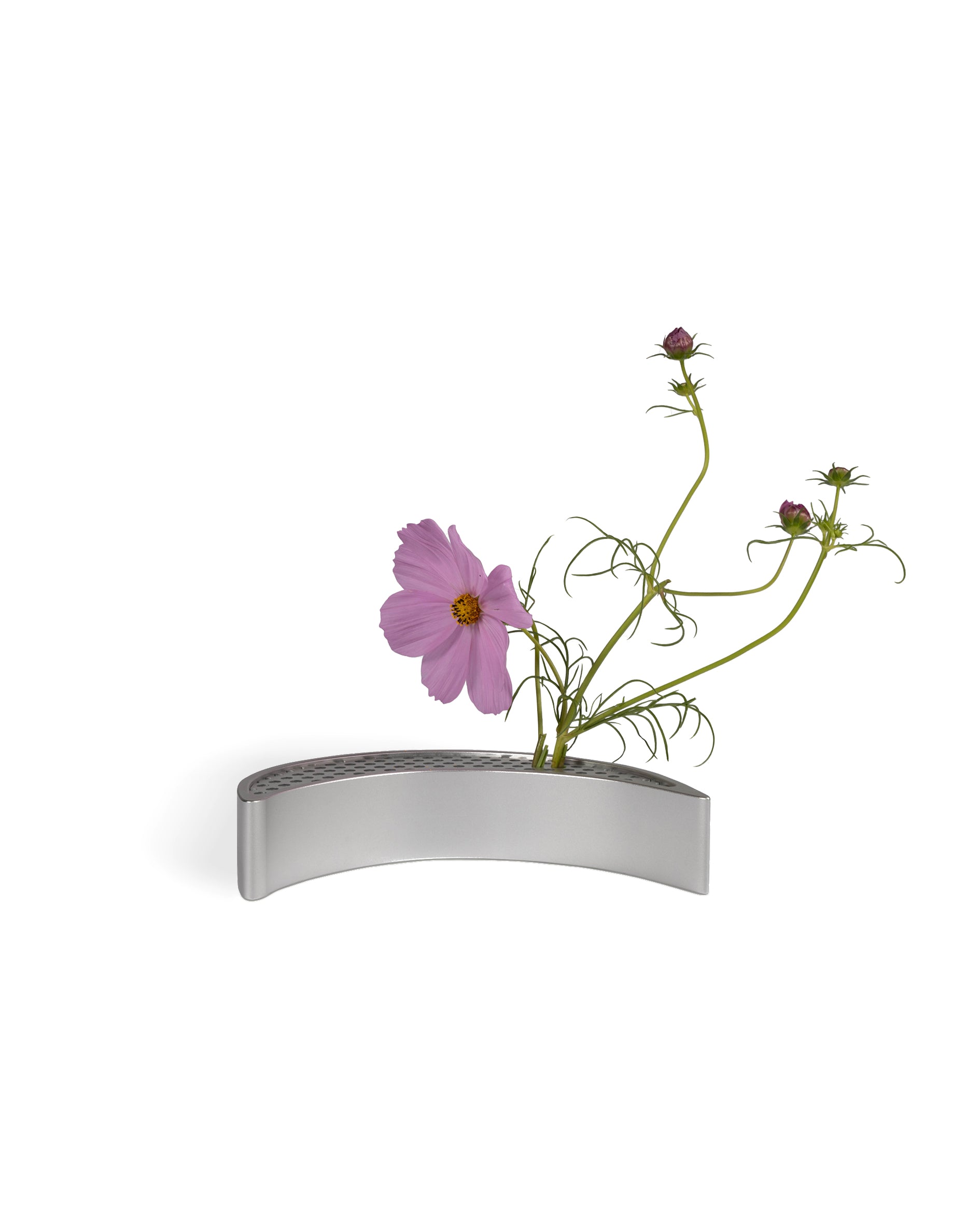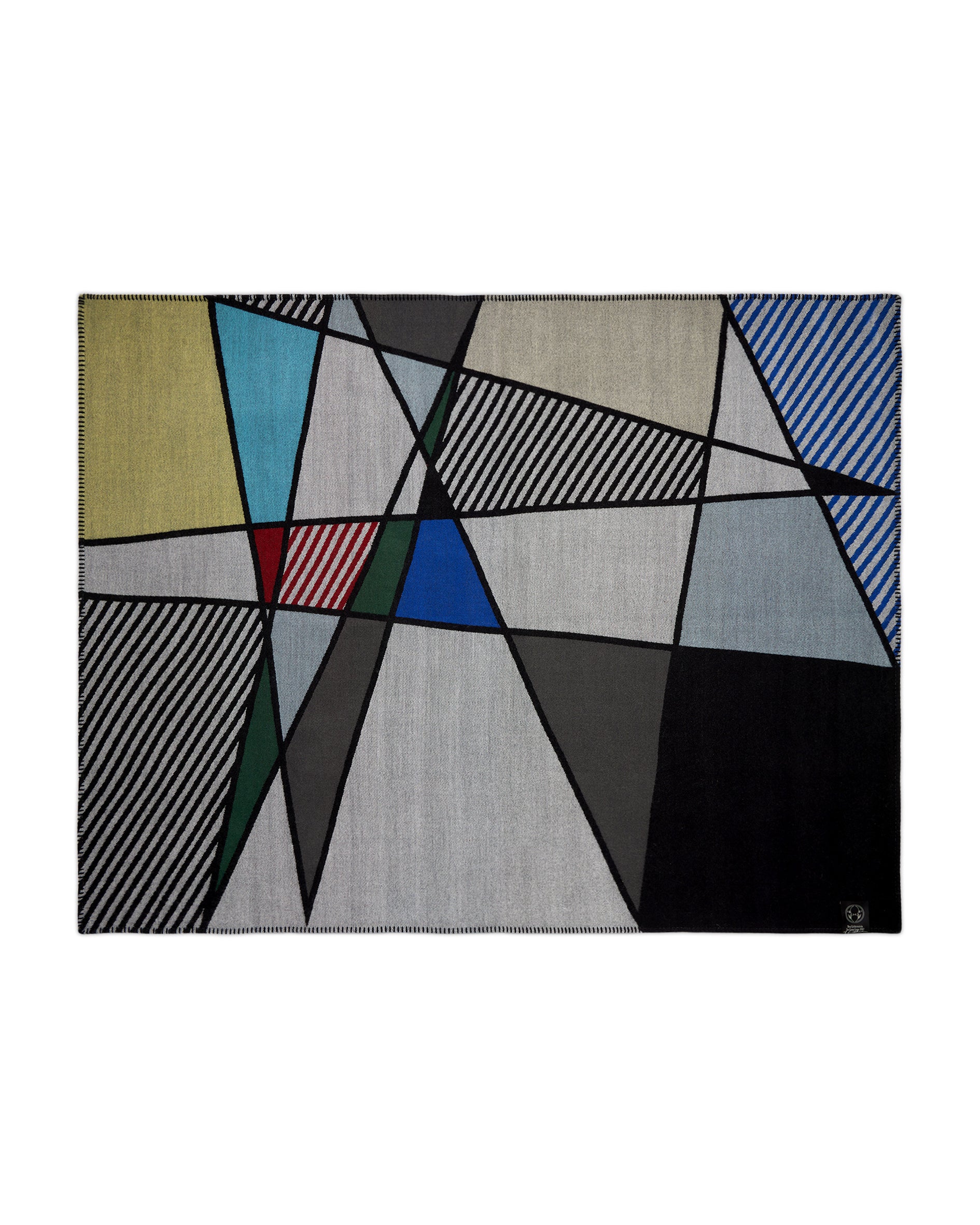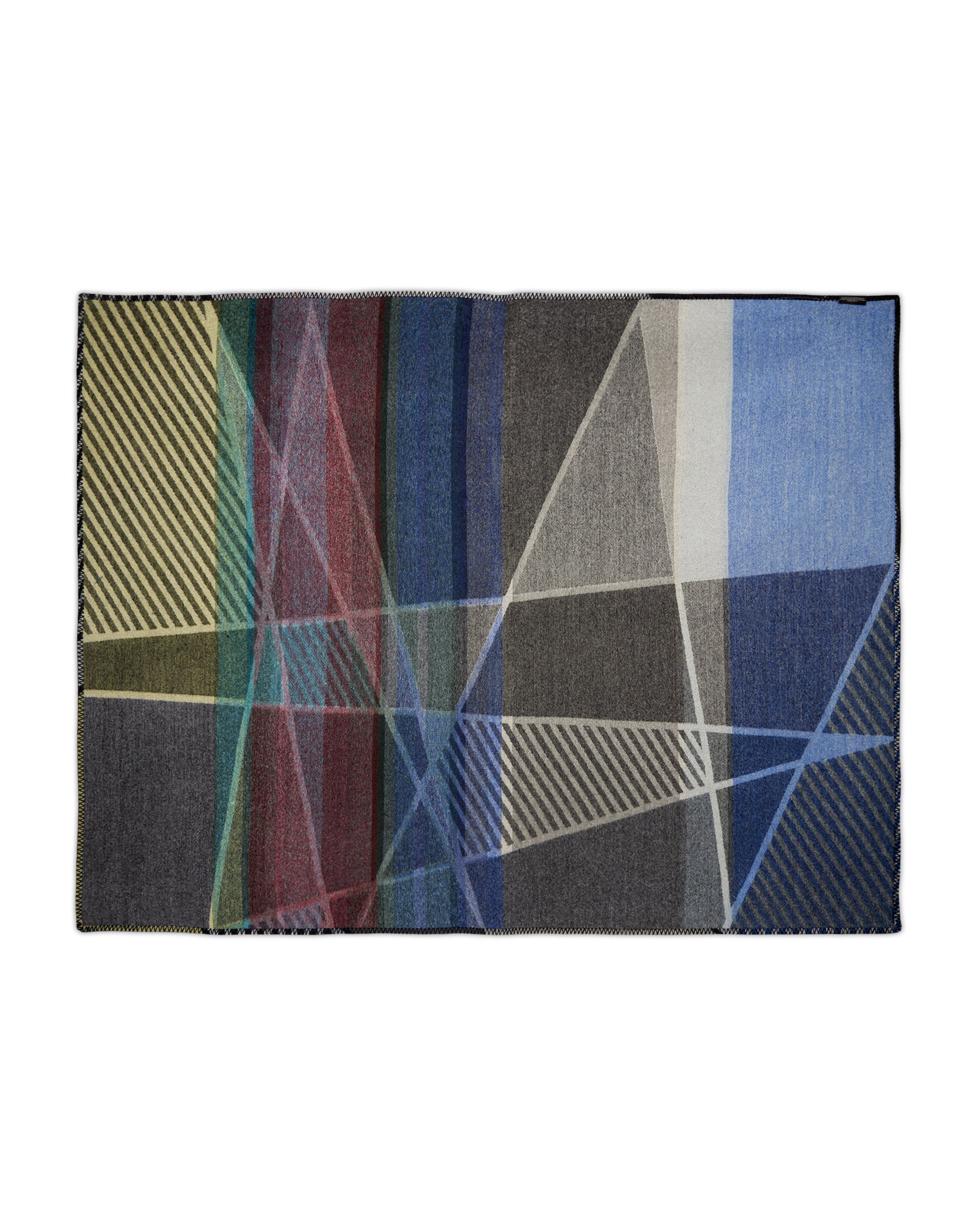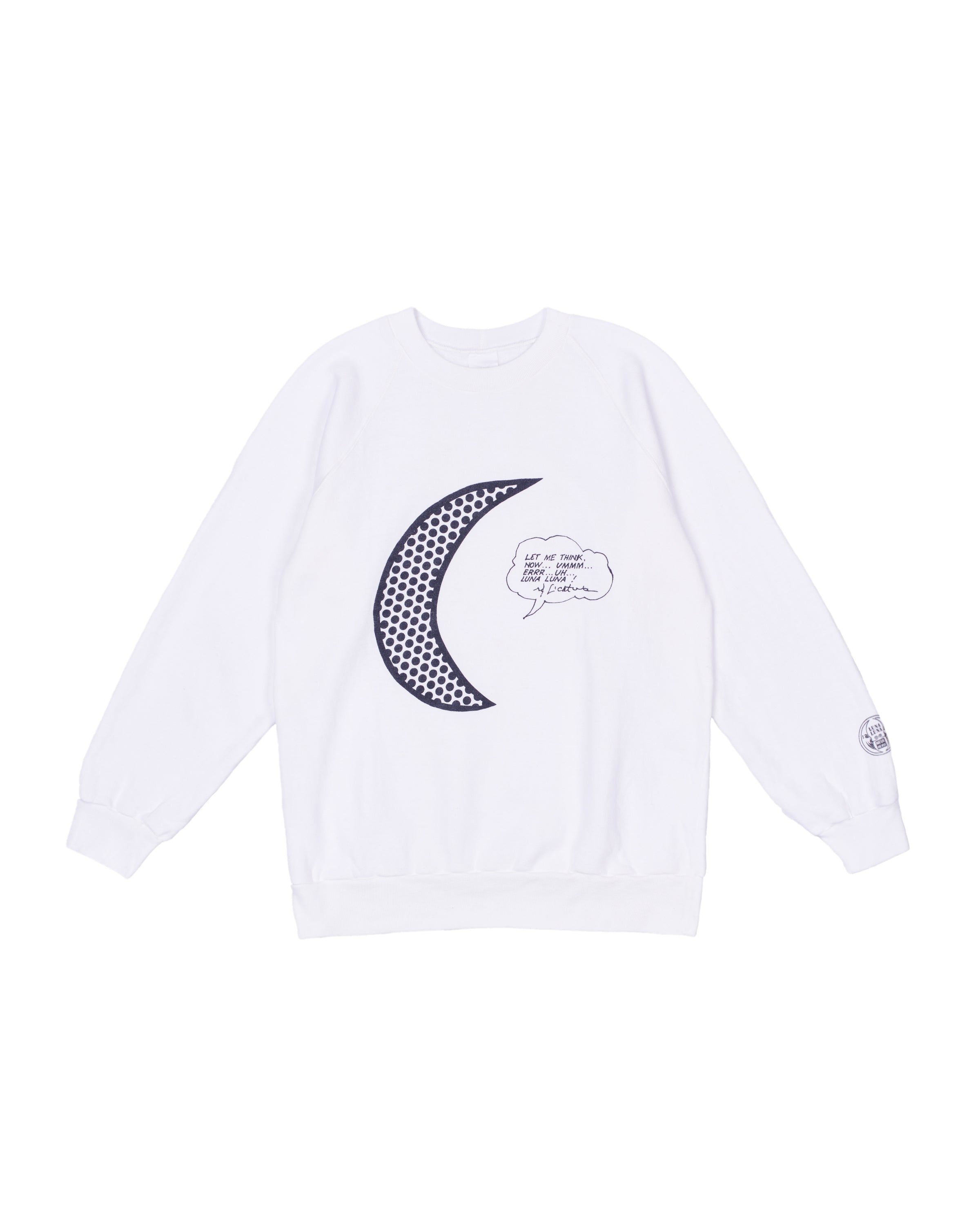For Luna Luna, Glass contributed a composition to accompany Lichtenstein's labyrinthian pavilion.

Philip Glass.
American composer Philip Glass has composed a prolific number of operas, symphonies, concertos, string quartets, and film scores. During the late 1960s, Glass formed the Philip Glass Ensemble, honing his trance-like, repetitive phrases and rhythms in an experimental group comprised of woodwind, keyboard, and vocals. They debuted at the Whitney Museum of American Art in 1969 and during early performances, the musicians moved around the space playing scores that had been tacked to the theater walls. This phase culminated with Music in Twelve Parts (1971-1974), an epic cycle that was performed over approximately four hours.
During the late 1960s, Glass formed the Philip Glass Ensemble, honing his trance-like, repetitive phrases and rhythms in an experimental group comprised of woodwind, keyboard, and vocals.

Fairground View: Roy Lichtenstein’s Luna Luna Pavilion, for which Philip Glass composed music.

Fairground View: Roy Lichtenstein’s Luna Luna Pavilion, for which Philip Glass composed music
In the 1970s, Glass began to compose operas—most famously Einstein on the Beach (1976), a legendary four-and-a-half-hour-long work created in collaboration with Robert Wilson and choreographer Lucinda Childs. His opera Satyagraha (1980) was based on the early life of Mahatma Gandhi and marked a return to Glass’ haunting, droning, symmetrical sequences. A lifelong collaborator, Glass has worked with playwright Jean Genet, artist Chuck Close, and musicians David Bowie and Paul Simon, among many others.
Glass’ Luna Luna contribution was a composition to accompany Roy Lichtenstein’s labyrinthian pavilion: an immersive, rectangular box outfitted with a sharp-angled, multicolored exterior and a dimly lit, mirrored blue interior.

